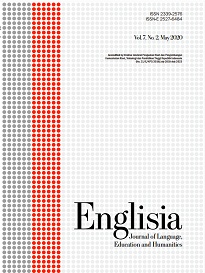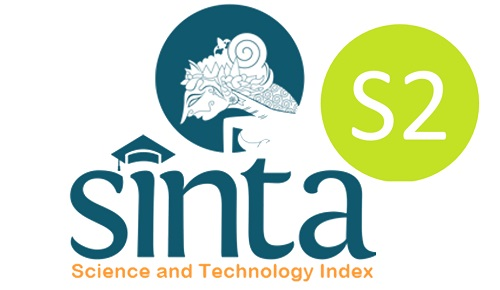Term papers: A chance or challenge for university students?
DOI:
https://doi.org/10.22373/ej.v12i1.22840Keywords:
Course assignments, Student perceptions, Term papersAbstract
This study aims to investigate how university students perceive term papers as part of their course assignments. The study used the qualitative research method to collect the data. The data were obtained by means of semi-structured interview. A total of 20 students majoring in English Education participated in the study, selected using random sampling technique. The data were then analyzed by using thematic analysis. The findings revealed that the students viewed term papers as a chance to develop their knowledge as well as motivation and confidence. On the other hand, some also perceived that term paper assignments were challenging due to several factors, such as lack of learning resources, lack of cooperation, lack of ability to explain difficult topics, and lack of academic writing and critical thinking skills. This study suggests that lecturers foster student collaboration, offer personalized assistance, and provide explicit instructions on scientific writing in order to make term paper assignments easier and beneficial to all students in higher education.
Downloads
References
Ananda, M., Nisa, R., & Safura, S. (2021). Students’ perceptions toward the use of Grammarly in checking grammar in assignments. Accentia: Journal of English Language and Education, 1(2), 72-77.
Baues, F. (2023, June 16). Term Paper – Master Your Fear of Writing. Study Smarter. https://www.studysmarter.co.uk/magazine/term-paper/
Bhatt, I. (2014). A sociomaterial account of assignment writing in Further Education classrooms [Doctoral dissertation, University of Leeds]. White Rose eTheses Online. https://etheses.whiterose.ac.uk/8642/
Blakely, A. (2016, October 18). Advice from a professor: Eight steps to writing a good term paper. University of Tennessee Knoxville. https://news.utk.edu/2016/10/18/advice-professor-steps-writing-good-term-paper/
Budjalemba, A. S., & Listyani, L. (2020). Factors contributing to students difficulties in academic writing class: Students perceptions. UC Journal: ELT, Linguistics and Literature Journal, 1(2), 135-149.
Burdett, J. (2003). Making groups work: University students’ perceptions. International Education Journal, 4(3), 177-191.
Dynan, L., & Cate, T. (2009). The impact of writing assignments on student learning: Should writing assignments be structured or unstructured? International Review of Economics Education, 8(1), 64-86.
Erdil, N. O. (2019, June), Motivating students for learning using scaffolding and a variety of assignments and activities [Paper presentation]. 2019 ASEE Annual Conference & Exposition. Tampa, Florida. https://peer.asee.org/33121
Farsia, L., & Sarair, S. (2023). Exploring writing challenges faced by students: Strategies for enhancing writing skills in the writing class. International Conference on Education, Science, Technology and Health (ICONESTH), 1554-1561
Fidian, A. (2020). The effectiveness of digital media for students’ writing abilities: A literature review. Edukasi: Jurnal Penelitian dan Artikel Pendidikan, 12(2), 137-142.
Fitria, R., Trisnawati, I. K., & Mulyani, M. (2023). What Indonesian EFL learners perceive of collaborative writing: Experience in writing essays online. English Education Journal, 14(1), 493-516.
Gloria, G., & Mbato, C. L. (2023). Indonesian master students’ motivation and metacognitive strategies in academic writing. Englisia: Journal of Language, Education, and Humanities, 11(1), 128-147. https://doi.org/10.22373/ej.v11i1.18559
Gorbold, S. (2022, December 1). How to write a term paper: Topics, examples, outline. EssayHub. https://essayhub.com/blog/term-paper
Graves, R., Hyland, T., & Samuels, B. M. (2010). Undergraduate writing assignments: An analysis of syllabi at one Canadian college. Written Communication, 27(3), 293-317.
Havel, P. D. (1995). Assignments: An important means of learning subject matter & the writing process. The American Biology Teacher, 57(6), 330-335.
Helmanda, C. M., Novrizal, A. M. N., & Safura, S. (2022). Students’ problems in the introduction section of thesis writing. Accentia: Journal of English Language and Education, 2(1), 1-6.
Hyland, K. (2013). Writing in the university: Education, knowledge and reputation. Language teaching, 46(1), 53-70.
Holloway, S. (2023, July 27). Term Paper vs. Research Paper: What are the Differences? Writers Per Hour. https://writersperhour.com/blog/term-paper-vs-research-paper
Hornby, A. S. (2010). Oxford advanced learner’s dictionary of current English (8th ed.). Oxford University Press.
Harmer, J. (2007). The practice of English language teaching (4th ed.). Pearson Education.
Irawati, E. (2017). Prewriting and drafting strategies of graduate students in writing term papers in English. KnE Social Sciences, 334-346.
Netta, A., Trisnawati, I. K., Fitara, R., & Asma, A. (2024). Exploring lecturers’ ways in assessing students’ English writing. Accentia: Journal of English Language and Education, 4(1), 1-8.
Kolesnikova, K. (2022, April 10). How to write a successful term paper. Studybay. https://studybay.com/blog/term-paper/
Laya, M. D. S. (2023). The role of technology on students assignment completion: Study conducted at Muhammadiyah Manadouniversity. Pendekar: Jurnal Pendidikan Berkarakter, 1(2), 01-13.
Malakar, L., & Begum, J. (2024). Use of technology in accomplishing homework by students at the secondary level. Educational Administration: Theory and Practice, 30(5), 10915-10920.
Muniruzzaman, S. Md., & Afrin, S. (2024). Improving academic writing skill: Difficulties encountered by undergraduates of English studies in Bangladesh. Englisia: Journal of Language, Education, and Humanities, 11(2), 215-231. https://doi.org/10.22373/ej.v11i2.19918
Oshima, A. & Hogue, A. (2007). Introduction to academic writing (3rd ed). Pearson Education.
Parker, D. (2023, November 8). How to write a term paper from start to finish. Essay Pro. https://essaypro.com/blog/term-paper
Pitrianti, S. (2023). Analisis kesulitan menulis makalah mahasiswa S1 semester awal. Jurnal Ilmiah SEMANTIKA, 4(02), 1–08.
Pradana, A. B. A., Fidian, A., Hajron, K. H., & Putro, H. E. (2020). Relationships among linguistic intelligence, students’ attitudes toward the use of ICT, and writing ability. Journal of Critical Reviews, 7(7), 590–593. https://doi.org/10.31838/jcr.07.07.105
Rafik-Galea, S., Arumugam, N., & de Mello, G. (2012). Enhancing ESL students academic writing skills through the term-paper. Pertanika: Journal of Social Sciences & Humanities, 20(4). 1229 – 1248.
Rahmat, N. H. (2020). Thinking about thinking in writing. European Journal of Literature, Language and Linguistics Studies, 3(4), 20-37.
Sardiko, L. (2004). Guidelines on writing a term paper, a bachelor paper, a master paper. Daugavpils University. https://de.du.lv/angluvaloda/Sardiko_Ieteikumi.pdf
Schunk, D. H., & Meece, J. L. (2012). Student perceptions in the classroom. Routledge.
Shields, M. (2010). Essay writing: A student’s guide. SAGE Publications.
Sundari, H., & Febriyanti, R. H. (2022). How do EFL university student-writers prepare their draft? An analysis of writing strategy use in EFL writing instruction. Englisia: Journal of Language, Education, and Humanities, 9(2), 60-73. https://doi.org/10.22373/ej.v9i2.10374
Tamene, K. (2020). The role of research paper assignment in the development of EFL learner's academic writing: Case study of second year master EFL students of sciences of the language at Biskra University [Master’s thesis, Biskra University]. Biskra University Research Repository. http://archives.univ-biskra.dz/bitstream/123456789/16100/1/Karima_TAMENE.pdf
Thomas, T. (2011). Developing first year students’ critical thinking skills. Asian Social Science, 7(4), 26–33. https://doi.org/10.5539/ass.v7n4p26
Ulum, Ö. G. (2020). The use of assignments in education. Base for Electronic Educational Sciences, 1(1), 20–26.
Widodo, A., Kadir Jailani, A., Novitasari, S., Sutisna, D., & Erfan, M. (2020). Analisis kemampuan menulis makalah mahasiswa baru PGSD Universitas Mataram. Jurnal DIDIKA : Wahana Ilmiah Pendidikan Dasar, 6(1), 77–91.
Downloads
Published
Issue
Section
License
Proposed Policy for Journals That Offer Open Access
Authors who publish with Englisia journal agree to the following terms:
- Authors retain copyright and grant the journal right of first publication with the work simultaneously licensed under a Creative Commons Attribution License that allows others to share the work with an acknowledgement of the work's authorship and initial publication in this journal.
- Authors are able to enter into separate, additional contractual arrangements for the non-exclusive distribution of the journal's published version of the work (e.g., post it to an institutional repository or publish it in a book), with an acknowledgement of its initial publication in this journal.
- Authors are permitted and encouraged to post their work online (e.g., in institutional repositories or on their website) prior to and during the submission process, as it can lead to productive exchanges, as well as earlier and greater citation of published work (See The Effect of Open Access).









